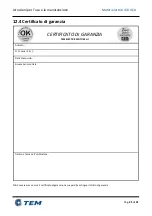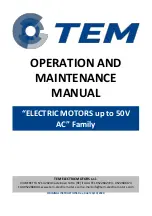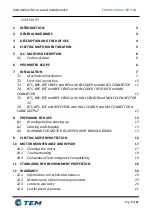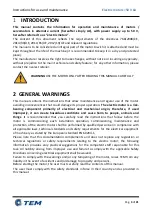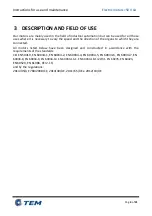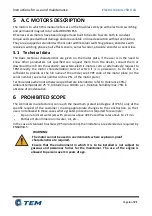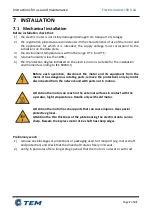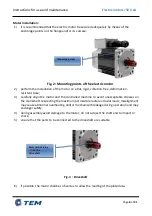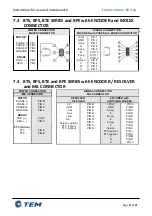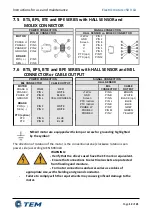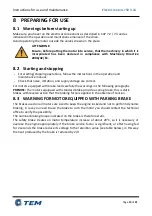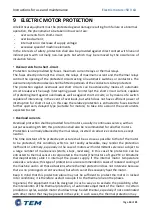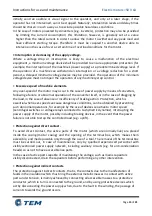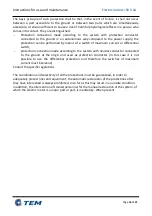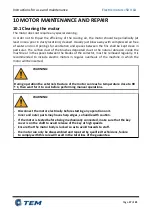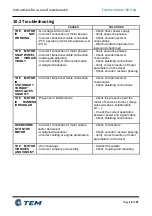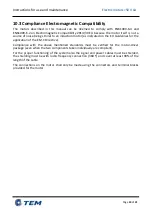
Instructions for use and maintenance
Electric motors <50 V CA
9
ELECTRIC MOTOR PROTECTION
All electrical equipment must be protected against damage resulting from failure or abnormal
operation; the phenomena to be taken into account are:
-
overcurrents from short-circuit;
-
overload current;
-
interruption or decrease of supply voltage;
-
excessive speed of machine elements.
In the interests of safety, protection shall also be provided against direct contact with live and
indirect parts with normally non-live parts but which may be removed by the occurrence of
insulation failure.
•
Overcurrents from short-circuit
Protection can be provided by: fuses, maximum current relays or thermal relays.
The fuses directly interrupt the circuit, the relays of maximum current and the thermal relays
control the opening of the protected circuits acting on automatic switches or contactors. The
overcurrent protection device shall be fitted upstream of the conductors to be protected.
The protection against overloads and short circuits can be achieved by means of: automatic
circuit breaker with enough interrupting power to interrupt the short circuit current, capable
of protecting itself against overloads as well as against short circuits; or by means of a switch
capable of intervening in the event of overloads, but which does not have sufficient power of
interruption for short circuits, in this case the relative protection is entrusted to fuses inserted
further upstream, delayed type (suitable for motors) to take into account the overcurrents
expected to start.
•
Overload currents
.
Overload protection shall be provided for all motors, usually in continuous service, with an
output exceeding 0.5 kW; this protection shall also be recommended for all other motors.
Protection is normally obtained by thermal relays, inserted on all active conductors, except
neutral.
The time constant of the protective structure shall be as close as possible to that of the motor
to be protected; this condition, which is not readily achievable, may render the protection
inefficient or untimely, especially in the case of motors with intermittent service or subject to
a large number of manoeuvres (starts, stops, reversals); in this case the protection can be
entrusted to thermal sensors incorporated in the motor (thermistors of type PTC or bimetallic
thermoprotectors) able to interrupt the power supply if the internal motor temperature
exceeds a set value; this type of protection is also recommended in cases of reduced cooling of
the machine and in all those situations where thermal protection does not intervene because
there is no prolonged current overload, but which can still excessively heat the motor.
Keep in mind that this protection alone may not be sufficient to protect the motor in locked
rotor conditions; it is therefore useful to couple it to the thermal one on the phases.
In general, the equipment must be designed in such a way as to exclude the possibility, after
the intervention of the thermal protection, of automatic adjustment of the motor. In certain
production cycles, sudden motor shutdown may be detrimental, especially if not coordinated
with other motor that may be present in the cycle; in such cases, the thermal protection may
Page
14
of
21

